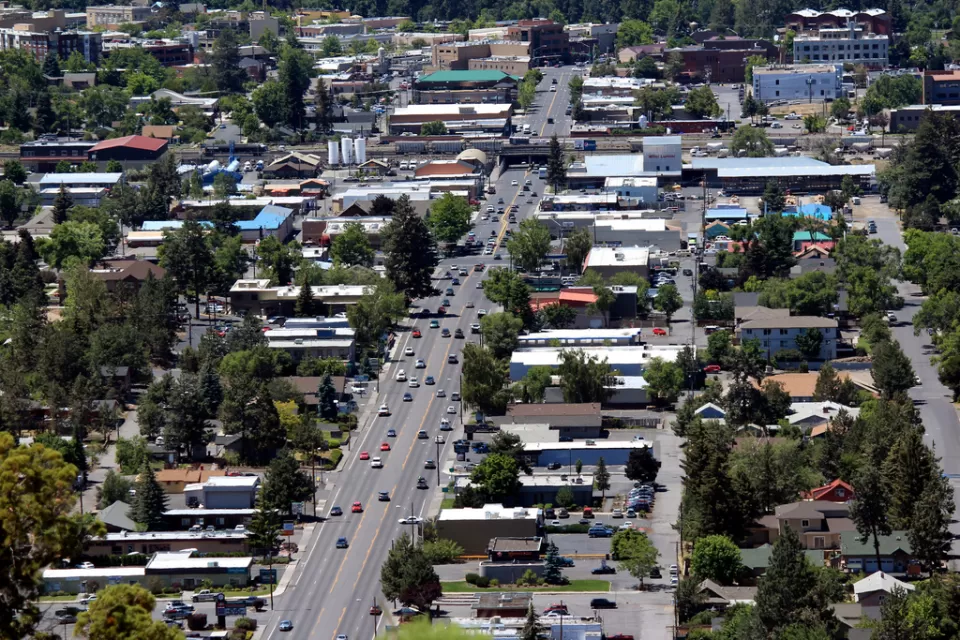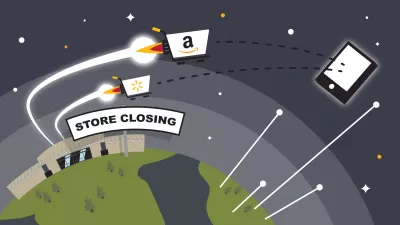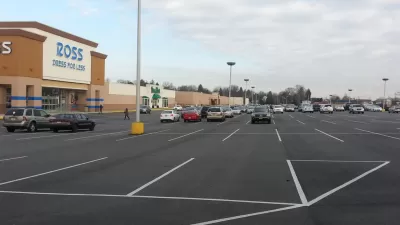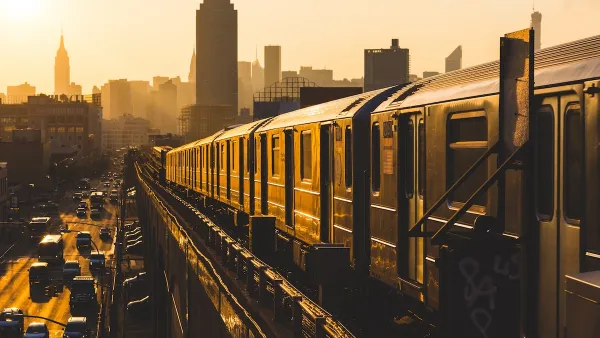The trend of store closures sweeping the nation has not passed up New York City. The Guardian takes an in-depth look at the market forces at work on the famous commercial corridors of New York City.
Edward Helmore writes:
Walk down almost any major New York street – say Fifth Avenue near Trump Tower, or Madison Avenue from midtown to the Upper East Side. Perhaps venture down Canal Street, or into the West Village around Bleecker, and some of the most expensive retail areas in the world are blitzed with vacant storefronts.
Helmore is describing the "retail apocalypse"—except instead of suburban malls, these closures are visiting some of the most urban commercial corridors in the world. And in New York, compared to other places in the United States, the blame is less likely to be laid at the feet of online retailers like Amazon.
Jeremiah Moss, author of the website and book Vanishing New York, is cited in the article saying high rents are the problem. Helmore explains more: "Part of the problem is the changing make-up of New York landlords. Many are no longer mom-and-pop operations, but institutional investors and hedge funds that are unwilling to drop rents to match retail conditions."
The article includes more detail on the business side of retail operations and commercial land ownership in New York City, along with descriptions of the effect of the closures on the ground in New York's neighborhoods.
FULL STORY: New York's vanishing shops and storefronts: 'It's not Amazon, it's rent'

Maui's Vacation Rental Debate Turns Ugly
Verbal attacks, misinformation campaigns and fistfights plague a high-stakes debate to convert thousands of vacation rentals into long-term housing.

Planetizen Federal Action Tracker
A weekly monitor of how Trump’s orders and actions are impacting planners and planning in America.

Chicago’s Ghost Rails
Just beneath the surface of the modern city lie the remnants of its expansive early 20th-century streetcar system.

Bend, Oregon Zoning Reforms Prioritize Small-Scale Housing
The city altered its zoning code to allow multi-family housing and eliminated parking mandates citywide.

Amtrak Cutting Jobs, Funding to High-Speed Rail
The agency plans to cut 10 percent of its workforce and has confirmed it will not fund new high-speed rail projects.

LA Denies Basic Services to Unhoused Residents
The city has repeatedly failed to respond to requests for trash pickup at encampment sites, and eliminated a program that provided mobile showers and toilets.
Urban Design for Planners 1: Software Tools
This six-course series explores essential urban design concepts using open source software and equips planners with the tools they need to participate fully in the urban design process.
Planning for Universal Design
Learn the tools for implementing Universal Design in planning regulations.
planning NEXT
Appalachian Highlands Housing Partners
Mpact (founded as Rail~Volution)
City of Camden Redevelopment Agency
City of Astoria
City of Portland
City of Laramie





























